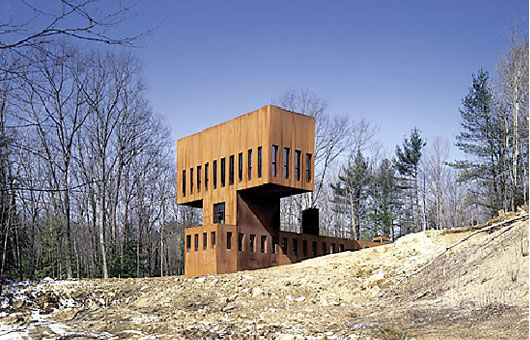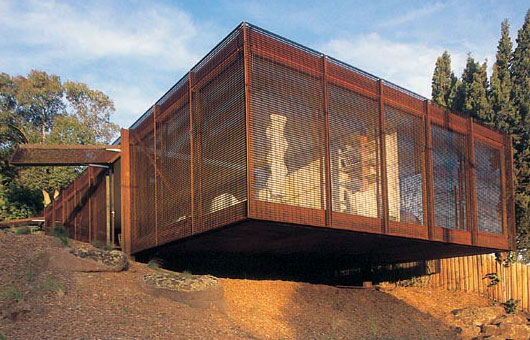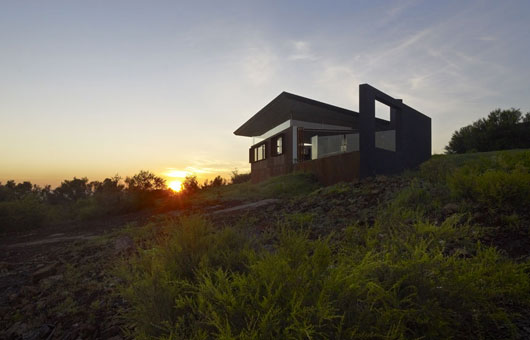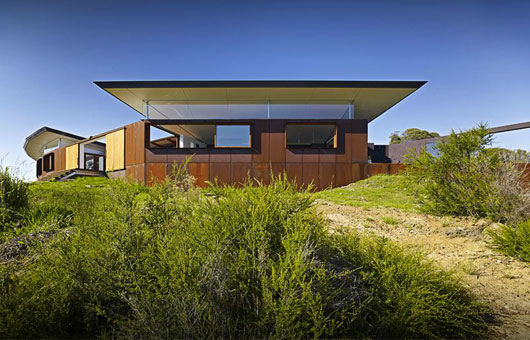Evoking visions of farm machinery left to rust in an open paddock, Corten is weathered steel. A serious grade steel that gets stronger as it ages, Corten oxidizes naturally to develop a rich patina.
Varying in surface colour from bright red ochre to burnt umber, Corten bestows a primordial charm on the buildings it helps construct.
Resembling the fine red dust of Uluru, or the rich textural interest of antique copper, Corten suits vast blistering desert landscapes and can also humanize
a concrete jungle.
Although Corten’s use by engineers has been commonplace for years – it was the inclusion of Corten in avant-garde designs of the early nineties, that fueled interest in the product locally.
‘T-House’ by Simon Ungers and Tom Kinslow, is perhaps the best known.


The stark arrangement is beautiful in its simplicity, alien to its surrounds, yet visually compelling.
Harmoniously integrating steel within the barren landscape, Joy invited the sky to become part of the living quarters, with a spatially complex
design that brilliantly utilizes sheet glass, and eastern design methodology.


popularity with our architects.
Exciting projects that use corten include Nonda Katsalidis’s beach house in Melbourne (pictured), The Hyde Park Army Barracks by Bates and Smart Pty. Ltd. and Sean Godsell’s ‘Kew House’ in country Victoria (pictured), an example that actually uses a different grade of oxidised steel to similar effect.
In the case of ‘Kew House’, Sean Godsell constructed an eight metre by nine metre living space, suspended over a five metre high slope, using 350 MPA that was oxidized and sealed with a clear primer.


Hyde Park Barracks and the Miners Centre in Broken Hill are other prominent public buildings that integrate Corten in a exciting way.
The Bates Smart project (pictured above) uses Corten to express the barracks sense of strong purpose and state function. While in the remote location of Broken Hill, the ‘Line of Lode’ visitors centre made the natural choice of Corten, in order to reflect the mining culture of the region.
Whether incongruous or epic, the imposing force of Corten steel is cropping up all over the country. From decorative frontages on William Street in East Sydney, to private residences in country settings, eagle eyes will continue to spot this design feature as it slips into modern architecture, reminding us of childhood trips to the country or Dad’s old garden shed.
For more information about Corten, designers can contact Blue Corp Steel manufacturers, (formerly BHP) where Corten is also known as Lyten and Austen.

